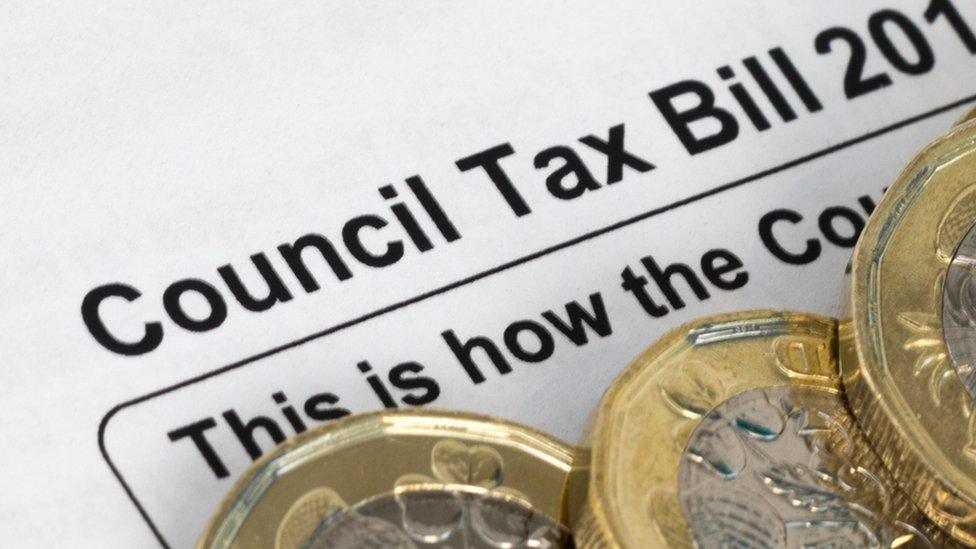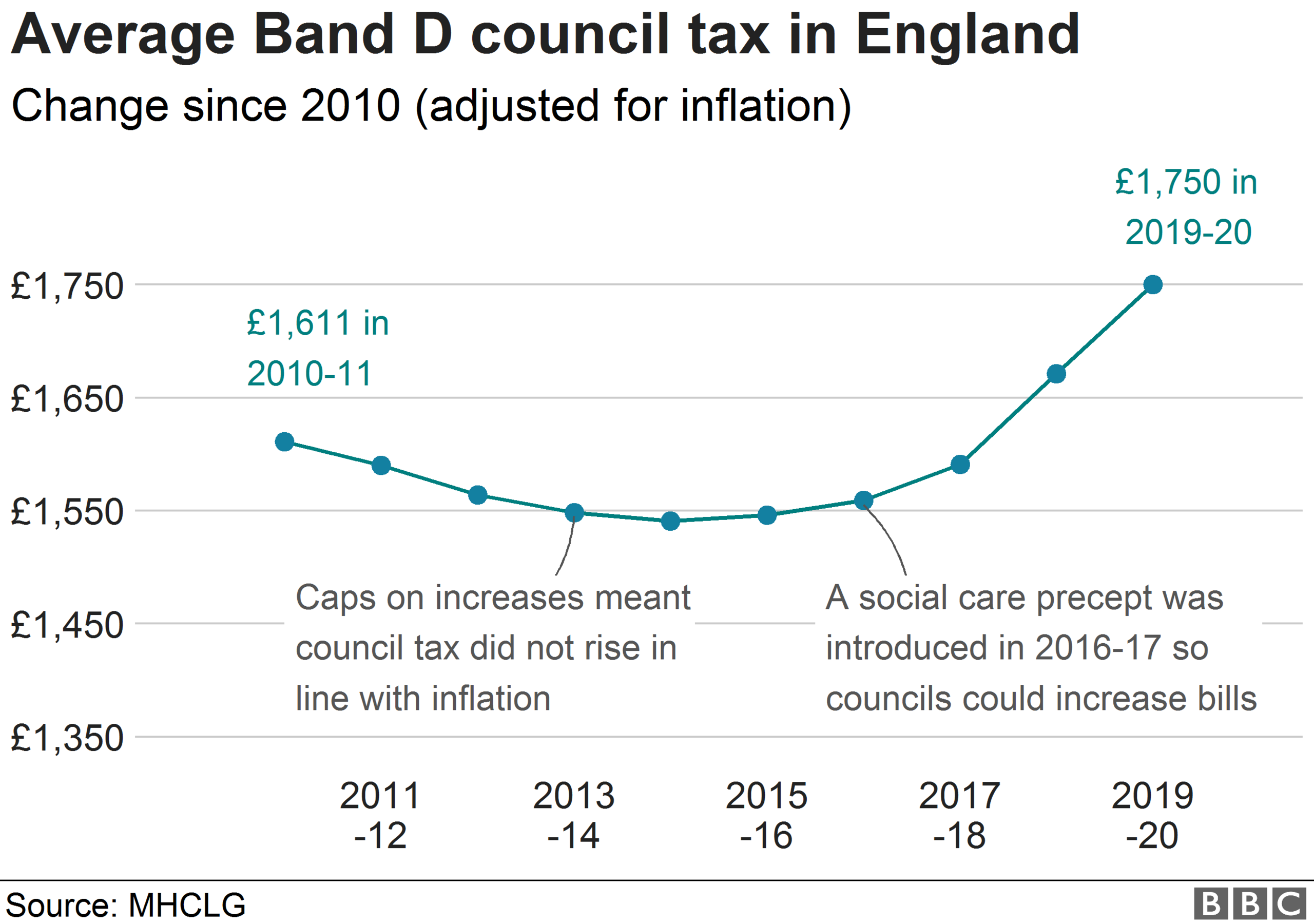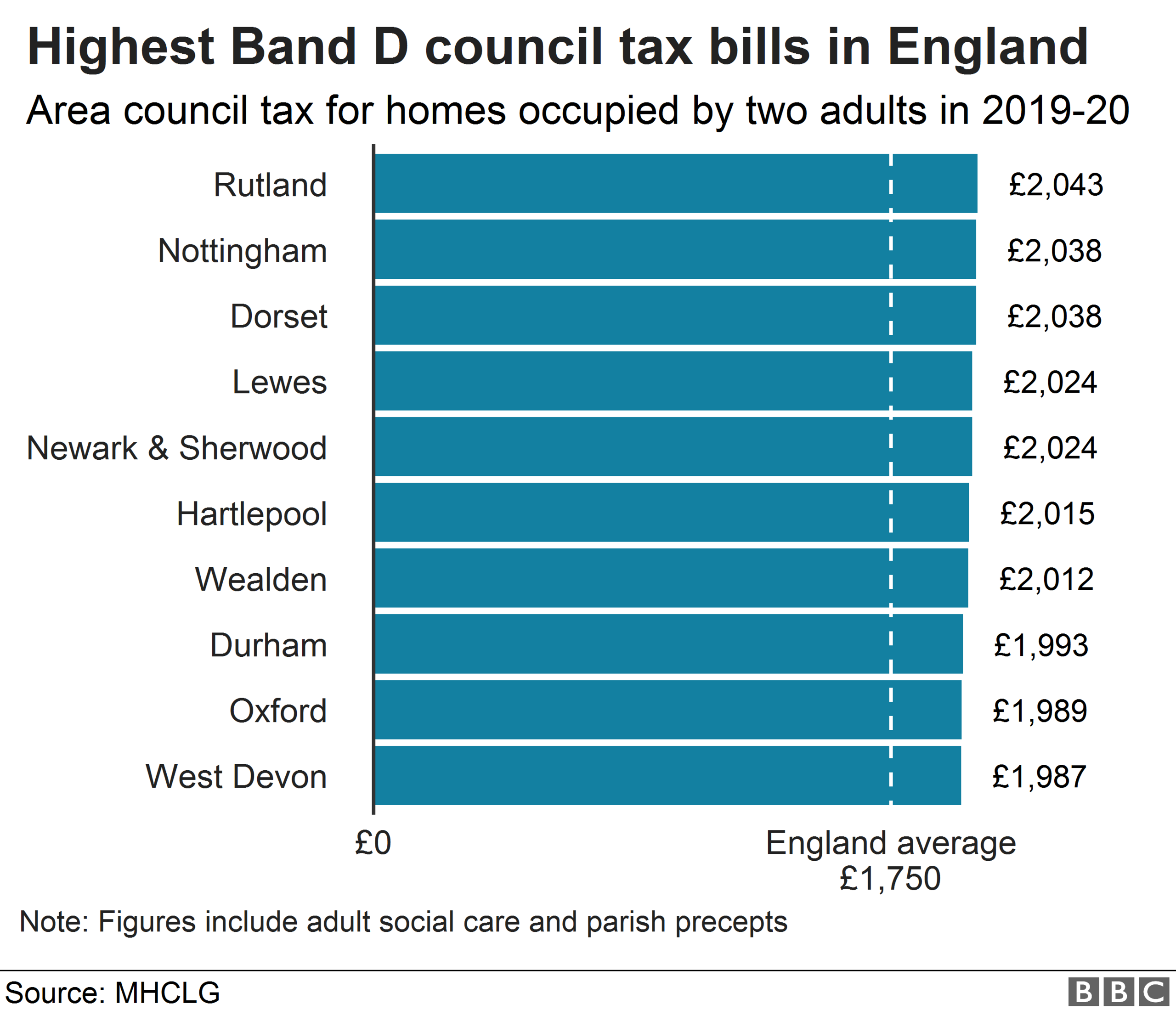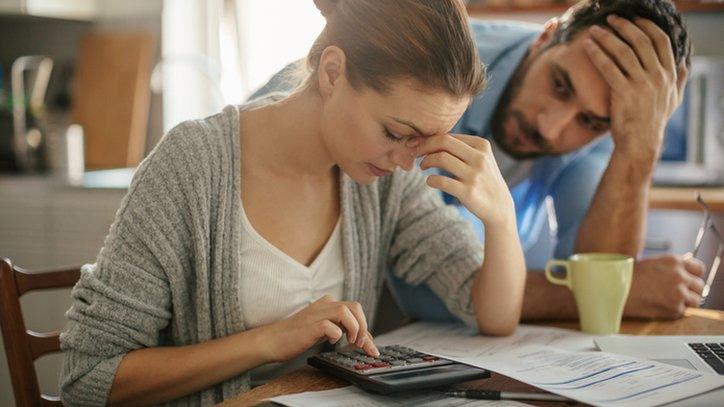Typical council tax in England will rise by 4.7% in April
- Published
- comments

Typical council tax bills in England will rise by 4.7% in April - the second biggest increase in a decade, official figures show.
The levy on an average Band D property will go up by £78 to £1,750, the government said, in part owing to the cost of policing and adult social care.
In the last decade, the annual increase was only higher last year, when bills went up by 5.1%.
Local authority funding by central government has been cut.
This has fallen by 60% in the last decade, leaving councils increasingly reliant on council tax and business rates revenue.

Local authorities in England are allowed to raise their council tax by 2.99%, plus a further 2% if they provide social care. Any that want to exceed this must hold a referendum.
The local referendum rule only applies in England. The National Assembly for Wales and the Scottish Parliament have the power to cap local authorities' council tax rises.
In Wales, the average rise will be about 6.5%, for example in Cardiff - the largest council in Wales - leaders set an increase of 4.9% while Pembrokeshire saw a 9.92% rise and Conwy 9.6%.
Taxpayers in Scotland will see council tax on typical Band D properties rise by an average of 3.9% to £1,243.
Northern Ireland has a rates system, external instead of council tax.
The typical council tax rise in England is well over twice the level of inflation, which records the rising cost of living and currently stands at 1.8%.
One reason for the rise is that, in the year from April, a total of 85 out of 151 adult social care authorities will use some or all of their remaining allowance, or precept, earmarked for adult social care.
Funding for the police has also had an impact with police and crime commissioners permitted to double their precept from £12 to £24.
Rural v town
The average area Band D council tax will be £1,477 in London, £1,739 in metropolitan areas, and £1,814 in unitary authority areas, the Department for Housing, Communities and Local Government said.
More rural areas, described as "shire" areas, will see the biggest typical rise - up £82 to £1,826 for a Band D property.

Councillor Nick Rushton, County Councils Network finance spokesman and leader of Leicestershire County Council, said: "For a long time, county residents have borne the brunt of the historic underfunding of county areas. It cannot be fair that a resident in a terraced home in Hinkley in Leicestershire is paying double that of a resident in a multi-million-pound house in Westminster.
"No-one wants to put up council tax, but many of us have very little option with county authorities facing the most severe financial pressures."

Why are council tax bills rising?

Across England, household budgets have been dealt a blow as council tax bills hit doormats. They will be rising by double the rate of inflation this year, meaning a jump of almost 15% over the most recent three years.
Part of this is owing to councils being given scope to raise bills by up to 2% to fund adult social care. They have also been given some leeway to boost funding for policing.
But higher bills do not necessarily mean a boost to local services. The funding central government gives local authorities will have fallen by almost 60% this decade. Even with the latest increase, the Local Government Association is warning of a funding "gap" of £7.8bn by 2025, which could put further pressure on services.
- Published6 March 2019

- Published14 February 2019

- Published5 December 2018

- Published25 May 2018

- Published21 March 2019
